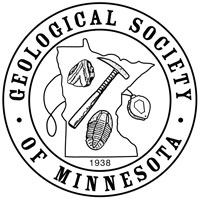Seminar Lab Date:
Seminar Lab presenter:
Seminar Lab Subject:
Seminar Lab Location :
Vincent Hall, 206 Church St. SE, Minnesota MN 55455 Room 16. MAP
Seminar Lab Details:
Summary:
The Midcontinent Rift System (MRS) is an approximately 2,200 km curvilinear Mesoproterozoic rift that stretches from Kansas northeast to the Lake Superior region where it turns southeast and extends through lower Michigan. Although rocks of the MRS are largely buried beneath younger rocks except around the margins and on islands of Lake Superior, the full extent of the MRS is highlighted by large positive aeromagnetic and gravity anomalies created by the huge volume of mafic volcanic and intrusive rocks that comprise the rift system. Rift volcanism lasted more than 20 million years, from about 1112 Ma to about 1090 Ma, with minor eruptions extending to about 1083 Ma. A conservative estimate of the volume of rift-related erupted basalt is 2 million cubic kilometers, possibly with an equal volume of intruded rock. The large volume of MRS mafic igneous rocks and their geochemical and isotopic characteristics support the existence of a mantle plume as a source of the magmas that helped create the MRS. As magmatism waned, the rift transitioned to a sedimentary regime, with clastic sedimentation attributed to post-rifting thermal subsidence. Seismic reflection profiles across the Lake Superior basin show that during rifting the Archean/Paleoproterozoic crust was thinned to less than half of its pre-rift thickness of ~50 km, replaced by more than 20 to 25 km of rift-related basaltic lava flows overlain by up to 5 to 7 km of clastic sedimentary rock. Faulting within a compressional regime heralded by the Grenville orogeny created the geometry of the rift still preserved today. Despite its extended tectonic history and extensive magmatism, complete separation of the continental crust, which would have created an oceanic environment, was never completed, leading to the mislabeling of the MRS as a ‘failed rift’.
Biography:
Laurel Woodruff is a research geologist with the U.S. Geological Survey. She joined the Survey in 1983 and has been co-located in the USGS Minnesota Water Science Center since 1991. Laurel received a B.S. from the University of Michigan, an M.S. from Michigan Technological University, and a Ph.D. from the University of Chicago. All three degrees were in geology. Over the last 3 decades she worked on a number of projects for the USGS, from soil geochemistry to titanium resources to the impact of wildfire on mercury. For the past 4 years, Laurel has been the head of a USGS project synthesizing the geology, geophysics, and metallogeny of the Midcontinent Rift System in the Lake Superior region.
